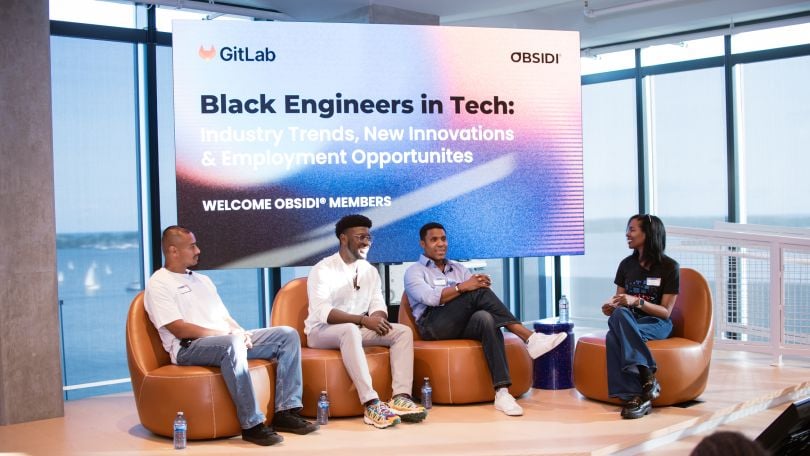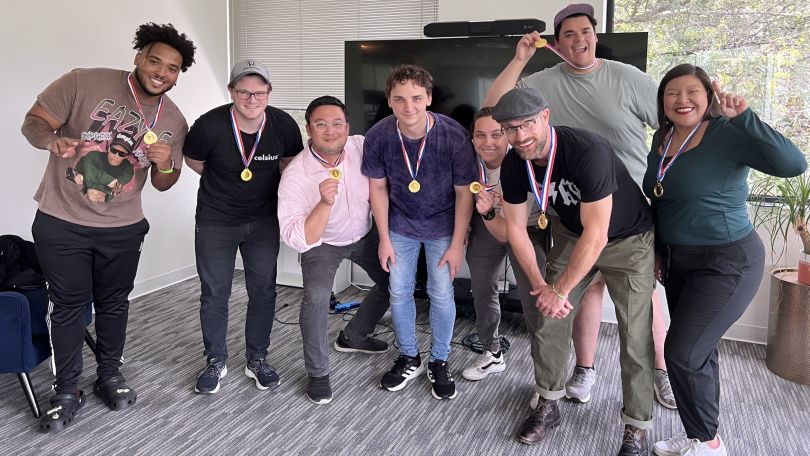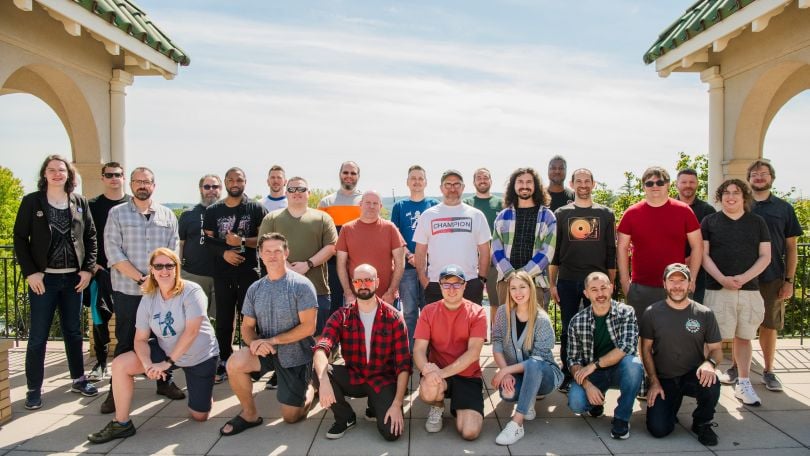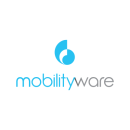Building a “team culture of ownership” can mean a lot of things.
For some team leaders, it might mean finding ways to make each project emotionally connect with team members. For other teams, a culture of “ownership” might literally mean having a financial benefit from the success of the business, like a bonus or an employee ownership business model.
Employee Ownership
The Harvard Business Review found that companies where at least 30 percent of the shares were owned by employees were more productive, grew faster and were less likely to go out of business.
Teams that have a strong sense of ownership in their work do have one unifying thing in common — leaders who care about their team.
The journal Frontiers in Psychology published a study in 2021 that found “shared leadership” as an effective model for project-based engineering design teams: Teams that shared leadership roles experienced higher levels of performance, less conflict and tended to retain teammates for longer.
Other research points to psychological safety as a defining characteristic of teams with a strong culture of ownership. A study published in the Journal of Mechanical Design specifically reviewed the role that gender plays in psychological safety on an engineering team; it noted that psychological safety is “validated as a consistent, generalizable and multilevel predictor of team performance and learning.”
Caring about the well-being of teammates is undoubtedly a marker of a great leader and an important step in building a culture of ownership.
Built In spoke with 13 engineering leaders who have their own unique approaches to crafting a culture of ownership on their teams.
Featured Companies
Cisco Meraki is a cloud-based IT platform that enterprises use to manage and secure their networks.
What are the best practices you follow to cultivate ownership on your team? Where did you learn these practices?
I foster team ownership through trust, empowerment, strategic delegation, accountability and nurturing a growth mindset.
Trust is the foundation. I trust, respect, am transparent about and leverage each team member’s strengths from day one, allowing them to take on responsibilities with confidence. Experts are hired for their knowledge, not to be micromanaged. I empower them to take the lead and use their talents to craft the best solutions. I delegate tasks that match skills and promote the growth of each team member, maintaining support while allowing autonomy.
As a manager, I model accountability, owning our team performance and spotlighting individual contributions. Embracing failures as learning experiences, we focus on collective improvement, celebrating successes openly and addressing setbacks constructively in private.
I have learned these practices from my day-to-day interactions with colleagues and managers at work and beyond, as well as from reading and applying knowledge from influential books such as Dare to Lead, Drive, Mindset, Multipliers, Start with Why, Good to Great and Extreme Ownership, to name a few.
How has a culture of ownership positively impacted the work your team produces?
Embracing ownership transformed our team. By fostering a bedrock of trust, team members are empowered to take risks and pursue bold objectives, leading to a dynamic work environment brimming with motivation and innovation. Our experts utilize their depth of knowledge to produce cutting-edge solutions, boosting productivity and quality.
“Embracing ownership transformed our team. By fostering a bedrock of trust, team members are empowered to take risks and pursue bold objectives.”
Autonomy allows for personal and professional growth, with mistakes serving as valuable lessons. The uplift in morale and job satisfaction is clear — there’s genuine pride in what we build together.
A prime example of this impact was during our upgrade to a supported version of Ruby — a primary programming language we use to develop our platform. I entrusted this critical task to a well-versed team member, who led the project with such efficiency that made it possible to bypass an intermediate upgrade step and exceed our tight timelines. This not only saved time and resources, but also reinforced the positive outcomes of strategic trust and delegation. The result is a team that is more engaged, innovative and aligned with our goals. Showcasing that a culture of ownership doesn’t just improve work quality — it transforms our team’s identity, driving us to.
What advice would you give to other engineering leaders interested in fostering ownership on their own teams?
My key advice for engineering leaders is to build a foundation of trust and empowerment. I’ve found that recognizing each team member’s unique talents fosters a sense of value and belonging. By setting clear goals and maintaining transparency, you enable your team to aim accurately and engage with challenges head-on.
I make it a point to stay close to my team, offering the support they need to remove blockers and navigate complex situations. Timely, frequent constructive feedback is crucial — it’s the cornerstone of growth and continuous improvement.
Moreover, I believe in leading by example. I practice ownership of my decisions and outcomes, showing my team the importance of accountability. When they see me owning my successes and setbacks, they feel encouraged to take charge of their work with confidence.

GitLab is an open core software company that develops a comprehensive DevSecOps platform used by more than 100,000 organizations.
What are the best practices you follow to cultivate ownership on your team? Where did you learn these practices?
Cultivating ownership within a team is essential for empowerment and decision-making, motivating team members and developing strong subject matter experts.
I foster ownership by clearly defining boundaries and roles for SMEs, making their expertise transparent. This clarity helps everyone understand who the experts are and their responsibilities. I trust these team members with challenging problems, helping them build the confidence to tackle difficult issues.
When questions arise, I redirect them to the relevant SME. This practice reinforces their role within the organization, ensuring everyone knows who the go-to experts are. It also helps SMEs feel valued, needed and important in the company.
At GitLab, we ensure this by assigning objectives and key results to specific SMEs. They identify solutions, build them, delegate work, communicate status, define timelines and set metrics to determine OKR success. They own the entire process.
I learned these tips over years of feedback from people feeling micromanaged or bored and ready for challenges. Empowering people and giving them ownership of tasks proved to be a great motivator, resulting in high-functioning teams and better results.
“Empowering people and giving them ownership of tasks proved to be a great motivator, resulting in high-functioning teams and better results.”
How has a culture of ownership positively impacted the work your team produces?
Just today, I found myself overwhelmed with tasks and decided to delegate to an engineering manager.
Our team is often busy, working to build top-quality products quickly, efficiently and securely. Occasionally, we need extra help to manually test our features. At GitLab, we build tools for developers and practice “dogfooding” — testing our products before or after public release.
At the last minute, I needed feedback on a new feature but struggled to find someone who could “dogfood” due to everyone’s busy schedules. Instead of searching for a volunteer and disrupting their workflow, I handed the task over to an engineering manager. She engaged solutions architects, who were eager to test the new feature and were well-suited for this task.
Her solution was far superior to my original plan. My approach would have been time-consuming and might have involved less enthusiastic testers. The solutions architects, being closer to the customer, provided feedback based on direct insights, aligning with our customer-focused goals.
This situation demonstrated how my report’s expertise and relationships led to a more effective solution, resulting in higher-quality feedback and a better product.
What advice would you give to other engineering leaders interested in fostering ownership on their own teams?
To answer this question, I considered what would motivate engineering leaders to encourage ownership on their teams.
Having ownership leads to higher morale and retention — which is motivating for most engineering leaders — while the absence leads to lower morale and retention.
Ownership fosters innovation and creativity, whereas its lack stifles these qualities. Ownership creates an environment of psychological safety and trust between leaders and their direct reports; without it, the opposite occurs.
Also, delegating ownership lightens your load, allowing you to focus on responsibilities only you can perform. Conversely, withholding ownership requires constant oversight, preventing you from meeting your job’s requirements.
Empowering team members with ownership leads to faster system delivery and fewer bottlenecks, while the absence of ownership results in delays and lower-quality outcomes.
An example of a time that I fostered ownership within my team was when I needed to restructure my organization but lacked the time. I decided to empower one of my senior managers to take on this task. They were closer to the work and the team. They had the time and enjoyed shaping their own organization, making it a win-win.
Upgrade, Inc. is a neobank that aims to make credit more affordable for millions of families across America.
What are the best practices you follow to cultivate ownership on your team?
We always promote a flat hierarchy to encourage open communication and collaboration between different people. This culture has been set in stone since Upgrade was founded, and that’s why “Own It” is one of our core values.
Clear and transparent communication across all levels of management are key to align our teams on what we want to achieve as a company. Whether it’s quarterly town halls or daily standups, it’s important to use different communication channels for our teams to ask questions and have open conversations about what we aim to achieve. This builds trust and collaboration across our various orgs, but also fosters engagement to ultimately improve our products. When team members know the “why” behind their work and have a clear understanding of what’s expected of them, it promotes ownership in how they want to accomplish projects that impact different teams.
“When team members know the ‘why’ behind their work and have a clear understanding of what’s expected of them, it promotes ownership in how they want to accomplish projects that impact different teams.”
How has a culture of ownership positively impacted the work your team produces?
Having team members with a strong sense of ownership led to a more motivated, innovative and engaged team. The Servicing team, who handles the nuts and bolts of loan processing, recently included a business overview into the quarterly engineering kickoff meeting. We reviewed company performance metrics specific to the Servicing domain and examined how recent projects impacted those results. We also discussed opportunities for professional growth, revisited company objectives and aligned upcoming projects to keep these goals on track.
Adding the quarterly business overview highlighted how our team members’ individual work contributes to the progress and success of Upgrade’s goals. By building a culture of ownership, our employees can experiment with how they tackle projects, think creatively to solve challenges and drive innovation by proposing new ideas.
Beyond Finance is a fintech company of debt-solution experts helping people reach financial freedom.
What are the best practices you follow to cultivate ownership on your team?
I have a few that come to mind. I learned these through my experience working for companies big and small, under managers great and awful and through trial and error in my own team management.
Larkin’s 7 Practices to Cultivate Ownership
- Remember that the best answer wins — leave egos at the door.
- It’s OK to own and deliver someone else’s solution; projects have many parts.
- Ownership doesn’t mean dictatorship. You have to be open to feedback, which is a part of trust.
- “Trust, but verify” is a good practice so you don’t allow experience or power differentials to create a culture of rubber stamping.
- Give people a chance to learn by doing with a safety net. Your team will be proud of their work even if mistakes are made along the way.
- Lead by example. Your team will value a manager that is able to go hands-on when needed.
- Assume good intentions. Hanlon’s Razor applies here: “never attribute to malice that which is adequately explained by ignorance or incompetence.”
Where did you learn these practices?
I’m currently reading The Manager’s Path by Camille Fournier and have found it to be a great resource and relevant to my role. I’m fortunate to be able to learn by doing, with a safety net, at Beyond Finance. My goal is to help my team succeed, and ultimately, become engineering leaders themselves if they desire.
How has a culture of ownership positively impacted the work your team produces?
One way we foster a culture of ownership is that the members of my team rotate who gets to be “project lead.” This has helped ensure that everybody is exposed to more of the software development lifecycle, spreads out domain knowledge and creates opportunities for mentoring from the senior team members when they are not the acting lead. This also gives juniors a chance to step up and take on more responsibility in a structured way.
We also have each team member contribute to each project if possible, so that the ownership is shared and everyone has a basic understanding of what’s being worked on. This has positively impacted my team when someone needs to go on PTO, gets pulled into a production hotfix, or needs to help out on a higher-priority project because they are the subject matter expert. Additionally, this rotation allows our team leads to practice delegation and ensure that the projects we work on are consistent with our development standards and practices, which is a crucial skill for reaching the next leadership level.
Having a culture of ownership at the project level spills over to ownership of the product as a whole, which fosters a sense of camaraderie across all the teams here at Beyond Finance.
What advice would you give to other engineering leaders interested in fostering ownership on their own teams?
Trust your team. Give them a chance to grow. Delegate. In the beginning, it’ll mean more work for you to hand things off correctly, but the overall career growth and delivery of your team will accelerate when everyone is allowed a chance at ownership.
Teach your leads how to delegate and to coach from the sidelines, that way they’ll experience ownership too. Have reasonable expectations and be fair — don’t assign a junior-level member as “project lead” on a senior-level project, or one that is high priority and requires a quick turnaround. The pressure and stress will create a negative feedback loop. Maintenance or bug fixing can be “owned” as a project the same as feature work, and has lower stakes.
Help your team learn to walk before they run. Give them a chance to fall down without needing a trip to the hospital — or metaphors aside, without getting yelled at by stakeholders or executives. Ultimately, you are accountable for what your team does, but that doesn’t mean you need to micromanage everything they do along the way. Act as an umbrella so that your team knows they are covered, but allow some rain to land on their shoes so they understand the stakes are real.
You got this.
PrizePicks developed an app where users can play fantasy sports daily.
What are the best practices you follow to cultivate ownership on your team? Where did you learn these practices?
Rewarding someone for the initiative rather than the outcome is undervalued. You always hope for the desired outcome in any project but that’s not always the case. When you reward individuals for taking the initiative, regardless of the outcome, it becomes easy to create an environment of ownership.
“When you reward individuals for taking the initiative, regardless of the outcome, it becomes easy to create an environment of ownership.”
How has a culture of ownership positively impacted the work your team produces?
Individuals feel more empowered to drive solutions to the finish line. They are encouraged to take the initiative and solve the problem on their own or with a team. For instance, we have a few individuals who are interested in becoming an engineering manager. We give those individuals the opportunity to own a management initiative, whether that’s defining a process for retrospectives, setting standards for interviews or leading a small project.
What advice would you give to other engineering leaders interested in fostering ownership on their own teams?
Rewarding initiative rather than the outcome is a key aspect that’s often undervalued in fostering ownership within engineering teams. While achieving the desired outcome is always the goal, it’s essential to recognize and reward individuals who take the initiative, regardless of the project’s result. This approach creates an environment where team members feel encouraged to take ownership without the fear of failure. It’s important to remember that not rewarding efforts can discourage individuals from taking the initiative.
Leading by example is also crucial. As a leader, your role is to pave the way and clear obstacles, setting a standard for your team. When team members see their leader actively engaged and setting the example, they feel more empowered to drive solutions to the finish line.
Valon is a financial wellness platform focused on homeownership.
What are the best practices you follow to cultivate ownership on your team? Where did you learn these practices?
Ownership is a mindset that needs to be cultivated for each engineer. They each have their own unique background where they may have more or less experience in ownership, and weaknesses that limit their success in owning projects from day one. It’s important to meet each individual where they are on their journey and support them to grow into what we expect.
We also need to understand what type of ownership we’re seeking from engineers. At Valon, we expect end-to-end ownership of business outcomes from our engineers. That includes understanding the business goals and context of their project, helping translate that into product requirements and then building and owning the technical systems to successful completion. That’s a high level of ownership that most engineers aren’t used to and isn’t necessarily appropriate for every company. For us, it’s important because our business is highly complex — we can only build successful technical systems if we fully understand the business context first.
How has a culture of ownership positively impacted the work your team produces?
There’s many benefits to a culture of ownership in engineering, both for the business and for engineers themselves. For the business, we’re able to ship much higher-quality systems at a faster pace, especially in complex environments. By entrusting engineering with business outcomes the business can empower us to operate more independently and deliver more value.
For engineers, if we can earn the trust from our peers in the business to fully own important initiatives then we can tackle interesting problems outside the pure technical domain. We get to take more pride in our work and fully understand the impact it has on not only the business but also our customers. For example, understanding the core requirements by reading industry guidelines, talking to customers, and learning from our internal experts — like our great compliance team — has led to more resilient technical systems that adapt easily to new product requirements over years.
“For engineers, if we can earn the trust from our peers in the business to fully own important initiatives then we can tackle interesting problems outside the pure technical domain.”
What advice would you give to other engineering leaders interested in fostering ownership on their own teams?
As leaders, we also need to understand our role in creating true ownership for engineers. We need to trust engineers with autonomy to make their own decisions while giving thoughtful feedback so they can improve over time. If we can’t empower engineers with autonomy, then they won’t feel true ownership over their work.
MobilityWare is a mobile gaming company.
What are the best practices you follow to cultivate ownership on your team? Where did you learn these practices?
At MobilityWare, engineers aren’t usually the “owners” when it comes to game development. Meaning, that we’re rarely the ones pushing, driving or sponsoring some new feature. That responsibility lies with the product owner. They determine which games we build, the priority of milestones and which features we’ll cut to deliver value sooner.
So before we can cultivate ownership, we first need to define what it means to engineers.
Ownership means “commitment to success.” And because engineers build the product, that commitment includes many things. Quality of the code, order of execution, timeline, code reuse, testing process, tech stack and documentation. It also includes communication, collaboration and the way we radiate information about the work. Sometimes, that commitment extends all the way into the design of the features themselves.
And how can we cultivate that? We make a concerted effort to look for the behaviors that demonstrate commitment to success. Then we recognize and reinforce.
“We make a concerted effort to look for the behaviors that demonstrate commitment to success. Then we recognize and reinforce.”
How has a culture of ownership positively impacted the work your team produces?
One of my most senior engineers is sometimes called the “X-Factor.” He earned that nickname many years ago because the projects he worked on tended to do better than projected. And that extended beyond just deadlines or the complexity of the code. The X-Factor could be measured in terms of higher revenue, more games played and better player retention.
He earned this nickname by being thoughtful, patient and constantly on the lookout for potential problems. When he senses something’s off, he finds the perfect moment to say, “I’m wondering. Maybe there’s a simpler way.” Then he offers a strikingly simple solution that shaves days, even weeks off the project. Sometimes his suggestions shift the design in fundamental ways.
This engineer is committed to success and he uses his influence to make our games better.
What advice would you give to other engineering leaders interested in fostering ownership on their own teams?
My advice? Pay attention. Watch your strongest performers; find the behaviors that demonstrate ownership.
In the case of the X-Factor, the behaviors were thoughtfulness, patience and doing deep dives on potential problem areas. He listened to his inner voice. He stayed engaged. And when he needed to take action, he used open and well-informed questions, instead of just bulldozing the rest of the team.
Once he realized that these behaviors brought out the best in people and led to success for the team, he responded as you might expect — he did them even more. He became stronger, more engaged, and even more committed to success.
Now, he’s a senior leader who is helping foster ownership in the next generation of game developers. We could not be more proud to be on this successful journey with him.
Greenlight Guru is a management software platform designed specifically for medical device companies.
What are the best practices for cultivating ownership on your team?
Our approach to cultivating ownership is built on the way we communicate, the way we think and the way we share progress.
We prefer to communicate via intent. Leaders communicate their intentions for what we want to happen and why as opposed to dictating the actions. Team members communicate what actions they intend to take to leaders in order to create room for additional information to be provided that may alter their approach.
Our leaders encourage a growth mindset and maintain a psychologically safe environment. The growth mindset is essential for embracing challenge and self-motivation. An environment of psychological safety is essential for taking risks, challenging the status quo and learning from mistakes.
“Our leaders encourage a growth mindset and maintain a psychologically safe environment.”
The final practice encourages team members to take accountability for defining, tracking and presenting the metrics associated with their objectives. They work with leaders to define objectives in terms of customer outcomes and business impacts as opposed to activity status or raw outputs. Team members and leaders collaborate to find metrics that they can control and are predictive of the desired outcome. Once defined, the team members build their own dashboards and present their metrics in our biweekly town hall meetings to share progress and maintain accountability with their stakeholders.
When you can take responsibility in your conversations, in your head and in front of your stakeholders then you can own your outcomes.
How has ownership positively impacted their work?
The first benefit to this approach comes in the form of alignment. The teams hear a consistent message on what is the desired state and why that state is desired. The second benefit is autonomy. Our software engineers have the freedom to choose how they would implement a solution. When you can drive high alignment and grant high autonomy you get higher levels of engagement from the team members. They take more responsibility in formulating the approach and pride in the results. This is a positive feedback loop that leads to deeper personal growth and continuous improvement. We get better at setting objectives and better at achieving them each time around.
The advice you would give to other engineering leaders interested in fostering ownership?
Conversations are more important than plans. Leaders must step away from the Gantt chart and focus on communicating their intent in terms of the what and the why. Is it clear enough? Is it complete enough? Is it simple enough? Avoid over-specifying the details of how to make it happen, which can be especially challenging for leaders with significant engineering experience.
Push authority to information, not information to authority. Leaders should practice yielding control of the decision making to those closest to the decision. Discourage teams from pushing information up the chain of the command and asking for a decision or wanting to change a plan. Instead, encourage them to ask for additional context when they are stuck and share their intentions when they want to make a change. Making decisions is critical to learning and building accountability for the decision.
Mind the environment and keep it safe. Leaders should actively be seeking to remove stress and cognitive overhead from the operating environment. When you give folks the freedom of action and the responsibility for outcomes there are inevitably going to be learning opportunities. Learning and adjusting to failure are part of learning to take ownership.
It’s a process, just to get started. Leaders may see two-steps-forward-one-step-back progress with their teams. They may get stuck. Just keep going. Find ways to celebrate the wins and the learnings together in a group setting. Recognize and reward those that demonstrate the ownership approach.
Garner Health is a healthtech startup that is transforming the healthcare economy through its two core offerings: Garner, a benefit program, and Garner DataPro, a provider recommendation platform.
What are the best practices you follow to cultivate ownership on your team? Where did you learn these practices?
While there are nuances to this answer that vary based on the current state of an organization, two of the most important ways to cultivate ownership are to play to passions and provide an autonomous environment for individuals to work within.
As to where I learned these lessons, I’d offer it’s a combination of my experiences in team sports and the managerial training I was fortunate enough to have had in prior roles. Those disparate arenas and the lessons each offered — coupled with personal experiences of mine as an engineering individual contributor — have really shaped me as a leader, allowed me to embrace having tough conversations and, at the same time, deepened my empathy.
How has a culture of ownership positively impacted the work your team produces?
I’ve been blessed to lead some really talented people and deliver meaningful value to the places I’ve been employed. From improving the reliability of Microsoft’s global domain name system offerings to delivering an extract, transform and load solution that enabled my crypto startup to cash out, to having multiple engineers follow me as my journey took me to mission-oriented startups like Altana and Garner Health — ownership has been behind the impact generated in every instance. Working at a startup requires a real belief in the product you are developing and being mission-first. The only way to make a product you truly believe in is to own your part in making the vision a reality.
What advice would you give to other engineering leaders interested in fostering ownership on their own teams?
Start with yourself. Be accountable to your own mistakes as a leader, discuss them openly and use them as opportunities for growth not for only yourself, but the team surrounding you in the end. This will help build what hopefully becomes a supportive community in good times, but more importantly in tougher ones.
“Be accountable to your own mistakes as a leader, discuss them openly and use them as opportunities for growth not for only yourself, but the team surrounding you in the end.”
Finally, I believe that you’re only truly ready to lead when the idea of servant leader resonates. A true leader makes those around them stronger, no matter the circumstances, through the realization that they can only go as far as the team allows them to. Build the team, build a shared success story. My career is living proof.
EliseAI is a conversational AI startup that uses machine learning to automate business conversations.
What are the best practices you follow to cultivate ownership on your team? Where did you learn these practices?
In cultivating ownership within my team, I prioritize transparency and autonomy. By maintaining open communication and sharing detailed context about our strategic direction, everyone is well-informed about how their work contributes to our larger goals. Additionally, I encourage my team to interface directly with clients as much as possible to get their feedback and further context. This enables everyone to make empowered decisions and independently navigate challenges.
To further foster innovation and ownership, I consciously attempt to lower the barrier to making contributions. Engineers are encouraged to push code quickly, collaborate with others and iterate fast to solve problems and build the best product possible. There are little to no formal processes to get in the way of that innovation.
Overall these simple values foster a sense of personal investment and accountability and ultimately lead to an environment where everyone wants to contribute at the highest level.
How has a culture of ownership positively impacted the work your team produces?
The biggest impact a culture of ownership has had on our business is the pace at which we can ship. By empowering and expecting engineers to push significant features and products forward, we’re able to juggle more workstreams and push more company initiatives forward simultaneously.
“The biggest impact a culture of ownership has had on our business is the pace at which we can ship.”
This approach allowed us to build a suite of products quickly and transition from offering a point solution in real estate to providing a full platform experience that captures the entire prospect-to-renter journey. The sense of ownership among team members has not only increased our agility but also enhanced our capability to innovate and adapt to market needs. As a result, we’ve successfully expanded into new industries, such as healthcare.
What advice would you give to other engineering leaders interested in fostering ownership on their own teams?
Keep it simple and try to hire the smartest people you can.

ePayPolicy enables the independent insurance market to easily accept and send electronic payments.
What are the best practices you follow to cultivate ownership on your team? Where did you learn these practices?
Here are some best practices I’ve used to cultivate a sense of ownership and empowerment within an engineering team. Fostering innovation, accountability and motivation are vital. Which makes having a clear vision and goals important. We make sure to establish a clear vision with specific, achievable goals. Engineers at ePay understand the larger purpose and see how their contributions matter.
“Engineers at ePay understand the larger purpose and see how their contributions matter.”
We follow rubber ducking methodology in software design and development to foster a collaborative culture, sense of empowerment, sense of responsibility and feeling of ownership over the outcome — while providing guidance and continuous learning.
We maintain transparent and open lines of communication. Encourage team members to voice their opinions, ask questions and provide feedback. We also recognize and reward contributions and achievements through formal recognition programs or simple acknowledgments.
All of the above have fostered camaraderie, shared responsibility, increased productivity, innovation and job satisfaction — resulting in a high performing team. I have built these core values and practices over my 15 years of leading product and technology teams.
How has a culture of ownership positively impacted the work your team produces?
This culture of ownership and empowerment has resulted in us being able to meet our product and engineering committed roadmap timelines 90 percent of the time — so our projects are only delayed 10 percent of the time.
We deliver a highest quality product — less than 10 escaped defects in a year — resulting in a customer net promoter score of 80.
And most importantly our team retention rate is 98 percent.
What advice would you give to other engineering leaders interested in fostering ownership on their own teams?
Cultivate a sense of ownership and empowerment within an engineering team to foster innovation, accountability and motivation. Also cultivate a culture of employee team players versus individuals. Lay down clear expectations and goals.
Close builds a CRM platform that focuses on better communication, without the hassle of manual data entry or complex UI.
What are the best practices you follow to cultivate ownership on your team? Where did you learn these practices?
Fostering ownership in engineers has always been important to me. It helps individual contributors grow professionally and fosters pride in the systems they build. At Close, we use Basecamp’s Shape Up software development methodology. In our six-week build cycles, we designate an engineer as the project lead for each cycle project. As project lead, this engineer is empowered to take ownership of the project, starting with initial product requirements and working them through to build and deliver a new feature to production.
Owning a cycle project means the engineer must consider numerous factors beyond just the technical implementation. Leaning into their leadership skills, they must now weigh decisions against schedule, feature priorities, people resources and organizational as well as technical aspects. They are no longer just responding to assigned issues; now they must think more broadly to ensure the project’s success.
“Owning a cycle project means the engineer must consider numerous factors beyond just the technical implementation.”
How has a culture of ownership positively impacted the work your team produces?
I believe this holistic approach helps improve the overall quality of our work. Changing the mindset from merely completing a project to taking ownership of it inevitably brings to light issues that might otherwise remain hidden. Whether they are performance issues, code quality improvements or even longer term thinking like how to improve our diagnosis for future projects.
Another crucial perspective, particularly important for a backend team, is that project leads should take ownership of delivering the technical aspects of the project and providing customer value. This helps remind everyone that we want to remain a customer focused engineering team. We want to push everyone to consider how our work impacts our customers’ experience.
What advice would you give to other engineering leaders interested in fostering ownership on their own teams?
Inspiring ownership in others can be scary since it may feel like you are giving up control and reducing your ability to influence the final outcomes. A normal reaction to this might be to put in more controls in an attempt to keep things on the tracks you believe are best. A more productive alternative is to think of what kind of guardrails can be put in place that allow teams some flexibility but still ensure everyone is generally heading in the same direction.
For us, guardrails might be a menu of patterns that can be used or a tech stack that includes a couple options for each resource. Maybe using Mongo or PostgreSQL is fine but choosing some other database platform needs a larger discussion.
On the project management side, perhaps leads can make changes that don’t impact more than some percentage of the planned work or time allotment. We have a milestone in the middle of our cycles that requires each team to give an update to the entire team and show what has been built so far.
Finally, architecture documents are a great resource that allows multiple teams to work independently but have enough guidance to help ensure work is delivered with a consistent technical approach.

AWeber is a SaaS marketing platform for small businesses that offers tools like automated email campaigns, behavioral tagging, landing pages, e-commerce tools, web push notifications and more.
What are the best practices you follow to cultivate ownership on your team?
Number one is give your team members challenges. The best way to help your team take ownership and grow is by giving them challenges that push their skills. It’s all about finding the right balance between stretching them and making sure it’s doable.
Number two is to ask the right questions. It’s important not to hand over all the answers when your team faces new challenges. Instead, ask them questions that guide them to figure things out themselves. This approach helps them own both the solution and the problem.
And finally, step aside is number three. We’ve got to let our team take charge if we want them to grow. They might do things differently than we would, and they won’t always be as skilled at new tasks as we or other team members are. When things go wrong, focus on what we can learn for next time and implement a process to avoid it from happening again, rather than dwelling on mistakes.
How has a culture of ownership positively impacted the work your team produces?
When there is a culture of ownership, it affects all aspects of work that team members produce.
As engineers, they are better stewards of the code that they work in, advocating for technical improvements and changes that enhance the longevity of the code. As an example, our front-end team members have been updating our React clients to React 18. While doing so, they noticed that React will be deprecating PropTypes and recommending use of TypeScript instead. They came up with a timeline to fully move to TypeScript and immediately started executing on the update alongside other product efforts.
They also collaborate better with product owners and even start thinking like product owners themselves when working on new features or changes to better serve our customers. For example, one of our engineers was creating a landing page for his wife using our product and was frustrated with the navigation options. This was a pain point for him and therefore is probably also a pain point for our customers, so over that weekend, he took it upon himself to make the update and expose it in the editor.
What advice would you give to other engineering leaders interested in fostering ownership on their own teams?
As engineering leaders, most of us started our careers as engineers ourselves. Sometimes, the hardest thing to do is step aside and give our team members room to grow and fully own the tasks they’re working on. I’ve found that when I’m most successful is when my team actually needs me least. It means that they are demonstrating the autonomy that I want to see from them and are actively supporting each other. It means I can focus on other things and contribute with my team on other initiatives.
It’s our job to ensure our team understands both the goals they are working toward as well as why these goals are important. It’s also our responsibility to provide them feedback along the way, which aids in their personal and professional growth as engineers.
When teams act with ownership, our goals become their goals and they often find different and creative ways to achieve and frequently exceed what we would have come up with ourselves.































